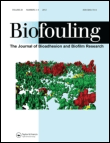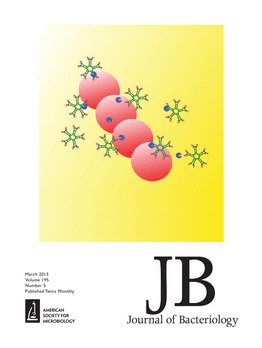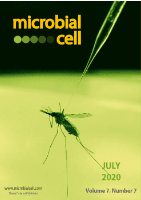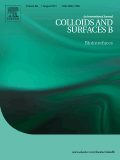
Biofilm
Scope & Guideline
Exploring the intricate world of biofilms and their applications.
Introduction
Aims and Scopes
- Microbial Interactions and Community Dynamics:
Research on the interactions within microbial communities in biofilms, including cooperation, competition, and the role of extracellular matrices. - Biofilm Formation Mechanisms:
Studies aimed at elucidating the biochemical and genetic pathways that lead to biofilm development across various microbial species. - Antimicrobial Strategies and Treatment Approaches:
Exploration of novel therapeutic strategies to combat biofilm-related infections, including the development of new drugs, coatings, and physical methods. - Environmental and Clinical Implications:
Investigating the role of biofilms in various environments, including clinical settings, water systems, and food safety, and their implications for public health. - Biofilm Characterization and Quantification:
Methodological advancements in the characterization and quantification of biofilms, including imaging techniques and assays to evaluate biofilm properties.
Trending and Emerging
- Biofilm Dispersal Mechanisms:
Recent studies have increasingly focused on understanding the mechanisms that lead to biofilm dispersal, which is crucial for developing effective treatment strategies against persistent infections. - Quorum Sensing and Communication:
Research on quorum sensing—how bacteria communicate within biofilms—has gained significant traction, with implications for controlling biofilm behavior and pathogenicity. - Biofilms in Space and Extreme Environments:
Emerging interest in biofilms' behavior in space and extreme environments showcases the relevance of biofilm research beyond terrestrial applications, particularly in astrobiology and planetary protection. - Innovative Antibiofilm Materials and Coatings:
The development of novel materials and coatings to prevent biofilm formation on medical devices and other surfaces has become a prominent research area, reflecting the need for practical solutions. - Interdisciplinary Approaches to Biofilm Research:
There is a growing trend towards integrating biofilm research with fields such as material science, engineering, and environmental science, fostering innovative solutions to biofilm-related challenges.
Declining or Waning
- Basic Biofilm Physiology Studies:
Research focused solely on the basic physiological aspects of biofilm-forming organisms without exploring practical applications or clinical relevance has decreased. - Single-Species Biofilm Studies:
There has been a noticeable reduction in studies examining biofilms formed by single species, as the focus has shifted towards multi-species interactions and their complexities. - Traditional Antimicrobial Agents:
The emphasis on conventional antibiotics in biofilm research is waning, with more attention being directed towards alternative therapies and novel compounds.
Similar Journals

BIOFOULING
Pioneering Insights into Water TechnologyBIOFOULING is a leading academic journal dedicated to exploring the complex phenomena associated with biofouling in aquatic environments, published by Taylor & Francis Ltd in the United Kingdom. With an esteemed history since its inception in 1988, the journal has become an essential resource for researchers and professionals in applied microbiology, aquatic sciences, and water technology, boasting impressive Scopus rankings: 59th in Aquatic Science and 78th in Water Science and Technology. While the journal operates on a traditional subscription model, it offers high-quality, peer-reviewed research that dynamically addresses the challenges posed by biofouling across various ecosystems. BIOFOULING aims to disseminate cutting-edge findings and innovative strategies, making it a vital platform for advancing knowledge and solutions in this critical area of study until 2024 and beyond. Researchers looking to publish or cite impactful studies will find BIOFOULING an invaluable outlet that significantly contributes to the global understanding of biofouling and its ecological implications.

JOURNAL OF BACTERIOLOGY
Pioneering insights into bacterial physiology and genetics.The JOURNAL OF BACTERIOLOGY, published by the American Society for Microbiology, stands as a pivotal resource in the fields of microbiology and molecular biology. With an impressive history dating back to 1945 and continuing through 2024, this esteemed journal focuses on advancing the understanding of bacterial physiology, genetics, and interactions with hosts. Although it is a traditional subscription-based journal, it maintains rigorous standards of peer review and quality, contributing significantly to its high Q1 and Q2 quartile rankings in microbiology and molecular biology respectively. The journal is an essential platform for researchers, professionals, and students who aspire to disseminate groundbreaking discoveries in the complex world of bacteria. Positioned in the 57th percentile for microbiology on Scopus, it showcases impactful research that informs and inspires advancements in health, biotechnology, and environmental sciences.

Microbial Cell
Fostering collaboration in microbial research.Microbial Cell is a distinguished open-access journal published by SHARED SCIENCE PUBLISHERS OG, focusing on the dynamic fields of microbiology, biochemistry, and molecular biology. Since its establishment in 2014, Microbial Cell has been at the forefront of disseminating cutting-edge research essential for advancing our understanding of microbial functions and interactions. With a commendable impact factor and ranking in the top quartiles (Q1 and Q2) across several categories, including Applied Microbiology and Biotechnology and Parasitology, this journal serves as an invaluable resource for researchers, professionals, and students alike. It features a comprehensive scope that encompasses the latest findings in genetics, cell biology, and virology, facilitating the academic community's access to high-quality peer-reviewed work. Microbial Cell not only contributes to advancing microbial sciences but also fosters an inclusive platform for knowledge sharing and collaboration in the scientific community.

JOURNAL OF INDUSTRIAL MICROBIOLOGY & BIOTECHNOLOGY
Fostering Knowledge and Innovation in Microbial ApplicationsJOURNAL OF INDUSTRIAL MICROBIOLOGY & BIOTECHNOLOGY, published by Oxford University Press, is a vital resource for researchers and professionals actively engaged in the fields of applied microbiology, biotechnology, and bioengineering. With an ISSN of 1367-5435 and E-ISSN of 1476-5535, this journal has established itself as a leading platform for disseminating innovative research findings and advancing knowledge in industrial microbiology since its inception in 1996. As of 2023, it is classified in the Q2 quartile across multiple categories including Applied Microbiology and Biotechnology, Bioengineering, and Medicine, underscoring its significance in the academic community. Notably, it ranks 26th of 127 in Applied Microbiology and Biotechnology, placing it in the 79th percentile, indicative of its high impact and influence. Although it does not currently offer Open Access, it remains a key outlet for high-quality scholarly articles that align with the objectives of improving industrial practices through biotechnological applications. For those interested in the latest developments and methodologies within the realm of applied microbiology and biotechnology, this journal serves as an indispensable reference.

Malaysian Journal of Microbiology
Advancing Microbial Knowledge for a Healthier TomorrowMalaysian Journal of Microbiology is a prestigious open-access journal dedicated to advancing the field of microbiology, published by the Malaysian Society for Microbiology. Since its inception in 2005, this journal has become an essential platform for researchers and practitioners, facilitating the dissemination of innovative studies in applied microbiology, biotechnology, and infectious diseases. Based in Penang, Malaysia, this journal not only focuses on local microbiological research but also positions itself within the broader global scientific community. Although currently placed in the Q4 category in several relevant fields—including Applied Microbiology and Biotechnology, Infectious Diseases, and Medical Microbiology according to the 2023 Scopus rankings—it plays a crucial role in encouraging novel research and fostering collaboration among scientists. The journal encourages submissions that contribute to the understanding of microbial processes, disease mechanisms, and novel biotechnological applications, thereby supporting the continuous growth of knowledge in microbiology. With open access since its launch, the Malaysian Journal of Microbiology ensures that all published works are freely available to the public, enhancing their visibility and impact within the scientific community.

COLLOIDS AND SURFACES B-BIOINTERFACES
Exploring the Frontiers of Biological InterfacesCOLLOIDS AND SURFACES B-BIOINTERFACES is a premier interdisciplinary journal published by Elsevier, dedicated to advancing the knowledge of interfaces and interactions in biological systems and their applications in biotechnology. With an impressive impact factor that underscores its significance in the field, the journal ranks in the Q1 category for Biotechnology, Medicine, and Physical and Theoretical Chemistry in the 2023 classifications. It has achieved notable positions in Scopus rankings, highlighted by a top-tier rank in Colloid and Surface Chemistry, demonstrating its influence on ongoing research. Spanning from 1993 to 2025, C&B B-BIOINTERFACES serves as a vital platform for innovative research contributions, fostering knowledge exchange among researchers, professionals, and students. The journal focuses on the intricate relationships between colloids, surfaces, and biological materials, paving the way for groundbreaking developments in drug delivery, biomaterials, and nanotechnology. While not an open-access publication, readers can anticipate insightful, high-quality articles that significantly impact the scientific community.

Reviews and Research in Medical Microbiology
Bridging Knowledge Gaps in Medical MicrobiologyReviews and Research in Medical Microbiology is a premier academic journal published by LIPPINCOTT WILLIAMS & WILKINS, focusing on groundbreaking research and comprehensive reviews that advance the understanding of medical microbiology. With an ISSN of 2770-3150 and an E-ISSN of 2770-3169, this journal serves as an essential resource for researchers, healthcare professionals, and students dedicated to the study of pathogens, infectious diseases, and microbial mechanisms affecting health. While the journal currently does not offer open access, its rigorous peer-review process ensures that only high-quality, impactful research is disseminated to the scientific community. The journal aims to bridge gaps in knowledge by presenting cutting-edge studies that explore novel therapeutic strategies, diagnostic methods, and the evolving landscape of microbial resistance. Nestled in the heart of Philadelphia, this journal proudly contributes to the advancement of medical microbiology and is an indispensable platform for the publication of critical findings that shape clinical practices and research trajectories in the field.

FOLIA MICROBIOLOGICA
Exploring the Intersection of Microbiology and Medicine.FOLIA MICROBIOLOGICA is a distinguished academic journal published by SPRINGER, focusing on the intricate realms of microbiology and its contributions to medicine. Since its inception in 1957, the journal has been a vital platform for disseminating pioneering research, addressing contemporary challenges in the field while facilitating discourse among researchers, clinicians, and students alike. With an ISSN of 0015-5632 and an E-ISSN of 1874-9356, FOLIA MICROBIOLOGICA publishes original articles, reviews, and critical insights that span not only traditional microbiological studies but also innovative applications in immunology and biotechnology. The journal is categorized within the esteemed Q2 tier in Medicine (Miscellaneous) and holds a Q3 rating in Microbiology as of 2023, reflecting its significant impact and relevance in the scientific community. Although it does not currently offer open access, it remains a respected resource, enabling professionals and students to keep abreast of advancements from its base in the Netherlands. With a strong commitment to quality and rigorous peer-review, FOLIA MICROBIOLOGICA serves as an essential repository of knowledge, fostering the next generation of microbiologists and medical practitioners.

mSphere
Advancing microbial insights for a brighter tomorrow.mSphere is a leading open-access journal published by the American Society for Microbiology, dedicated to the dynamic fields of Microbiology and Molecular Biology. Since its inception in 2016, mSphere has rapidly established itself as a reputable source of scholarly research, achieving notable impact factors and excellence within the academic community. The journal ranks in the top quartile (Q1) amongst its peers in Microbiology, and Q2 in the field of Molecular Biology, demonstrating its significance and relevance through Scopus rankings—specifically, it holds the #42 spot out of 182 in the Microbiology category and #108 out of 410 in Molecular Biology. With an editorial commitment to advancing the understanding of microbial and molecular sciences, mSphere provides an accessible platform for researchers, professionals, and students alike to disseminate groundbreaking findings. The journal promotes rigorous peer-review and invites innovative contributions aimed at enhancing microbial research mobility and molecular exploration. Accessible openly since 2016, mSphere continues to thrive as an influential publication driving scientific dialogue and discovery in the microbiological sciences.

Nanotechnology Science and Applications
Leading the Charge in Nanotechnology Research and Applications.Nanotechnology Science and Applications, published by DOVE MEDICAL PRESS LTD, is a premier open-access journal dedicated to advancing knowledge in the fields of nanoscience and nanotechnology, particularly focusing on their applications in bioengineering, biomedical engineering, and pharmaceutical sciences. Since its inception in 2008, this journal has provided a platform for the dissemination of high-quality research that is rigorously peer-reviewed, ensuring that only the most impactful findings reach a global audience. With an impressive impact factor reflected in its recent categorization in the Q1 tier for Pharmaceutical Science and Q2 for Bioengineering and Nanoscience, it stands as a critical resource for researchers, practitioners, and students eager to explore the cutting-edge innovations within these rapidly evolving disciplines. The journal's commitment to accessibility and its robust indexing in Scopus—ranked highly in its respective categories—reinforces its importance as a leading forum for the exchange of scientific knowledge and the fostering of collaborative research in nanotechnology applications.